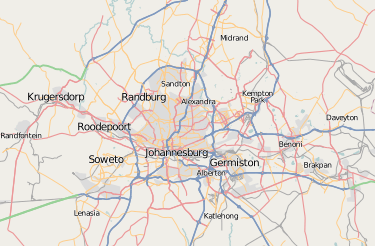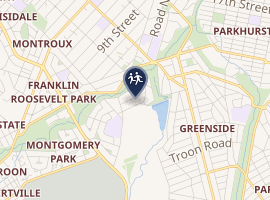Japanese School of Johannesburg
The Japanese School of Johannesburg (ヨハネスブルグ日本人学校, Yohanesuburugu Nihonjin Gakkō, JSJ) is a Japanese school in Emmarentia, Johannesburg, South Africa.[1]
| Japanese School of Johannesburg ヨハネスブルグ日本人学校 | |
|---|---|
| Address | |
 Japanese School of Johannesburg  Japanese School of Johannesburg  Japanese School of Johannesburg | |
12–20 Caledon Road, Emmarentia Johannesburg, 2195 Rep. of SOUTH AFRICA | |
| Coordinates | |
| Information | |
| Website | jsj |

| |
The Nippon Club of South Africa (日本人会 Nihonjin-kai),[2] a Johannesburg-based organisation, sponsors the school to encourage Japanese businesspeople to bring their families to Johannesburg.[3] The club had been established in 1961 to assist Japanese companies operating in Johannesburg. It was responsible for the early development and promotion of the Japanese School of Johannesburg.[4]
The Government of Japan financially subsidises the school, while the land used for the school was provided by the Government of South Africa.[5] It opened in 1966.[6] In its early days, up until around 1980, the school faced harassment and opposition from community residents.[7] The school had to close its Saxonwold location because of a hostile campaign in 1968. It re-opened in February 1969 under restrictions including limiting the size of the student body to 30.[8] In one suburb, the school was a frequent target of vandalism and racist graffiti.[7]
The lawsuit Evans v Japanese School of Johannesburg was filed in 2006. The applicant said that she was told that when she turned 63 years of age, she was required to retire, and accused her job loss of being unfair.[9]
References
- African Affairs, Volume 86. Royal African Society, 1987.
- Annual Survey of South African Law, 2006 (contributor: University of the Witwatersrand. Faculty of Law). Juta., 2006.
- Morikawa, Jun. Japan and Africa: Big Business and Diplomacy. Africa World Press, 1 January 1997. ISBN 0865435774, 9780865435773.
- Osada, Masako. Sanctions and Honorary Whites: Diplomatic Policies and Economic Realities in Relations Between Japan and South Africa. Greenwood Publishing Group, 2002. ISBN 0313318778, 9780313318771.
- Payne, Richard. "The nonsuperpowers and South Africa: implications for U.S. policy." Indiana University Press, 1990. ISBN 0253342945, 9780253342942.
- Peace Studies (平和研究 Heiwa Kenkyū), Issue 10. The Peace Studies Association of Japan (日本平和学会 Nihon Heiwa Gakkai), 1985.
Notes
- "アフリカの日本人学校一覧(平成23年4月15日現在) Archived 2013-07-13 at the Wayback Machine." Ministry of Education, Culture, Sports, Science and Technology. Retrieved 7 July 2013. "The Japanese School of Johannesburg. 12–20 Caledon Road, Emmarentia Johannesburg, 2195 Rep. of SOUTH AFRICA"
- Peace Studies, Issue 10, p. 145. "それらには例えば南ア国内における「日本人会」(The Nippon Club of South Africa)や「日本人学校」(Japanese School of Johannesburg)や日[...]"
- African Affairs, Volume 86, p. 177. "the Nippon Club, based in Johannesburg,[...]It also sponsors the Japanese School of Johannesburg designed to advance commerce by permitting businessmen to bring their families with them. The South African government provided the land and the Japanese govern[...]"
- Morikawa, p. 56.
- Payne, p. 106. "The South African government provided the land and the Japanese government subsidizes the school[...]"
- Osada, p. 58.
- Osada, p. 157: "The Japanese School, which was established in 1966, experienced constant harassment until around 1980 ... The school later moved to another suburb. There too, windows and equipment were often smashed and "Jap" was repeatedly scribbled on the wall."
- Osada, p. 59.
- Annual Survey of South African Law 2006, p. 623. "The applicant in Evans v Japanese School of Johannesburg (2006) 27 ILJ 2607 (LC), [2006] 12 BLLR 1146 was told to retire when she reached the age of 63 years. She also claimed that her dismissal was automatically unfair, and in addition[...]"
Further reading
- 石川 勝美 (前ヨハネスブルグ日本人学校:沖縄県沖縄市立諸見小学校). "ヨハネスブルグ日本人学校校内の植物調査と活用(その他)." 在外教育施設における指導実践記録 33, 223–226, 2010-12-24. Tokyo Gakugei University. See profile at CiNii.
External links
- (in Japanese) Japanese School of Johannesburg
- (in Japanese) Japanese School of Johannesburg (Archive)